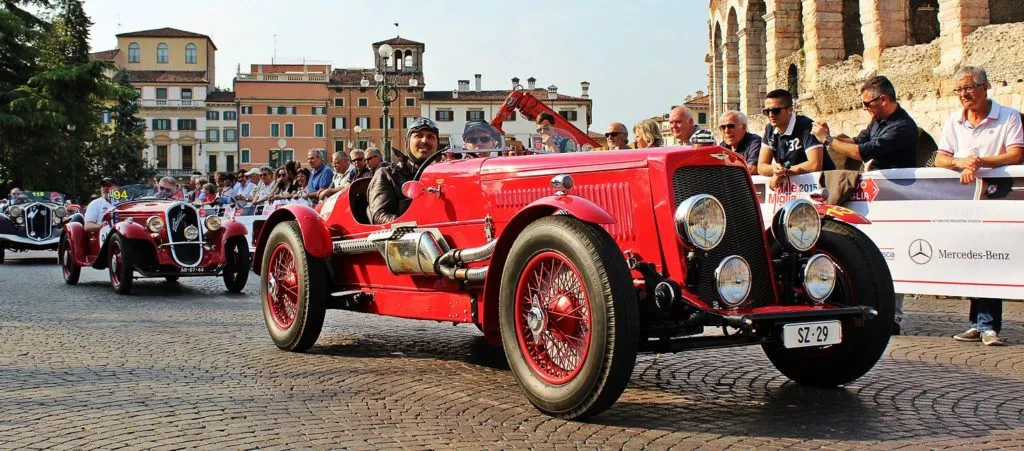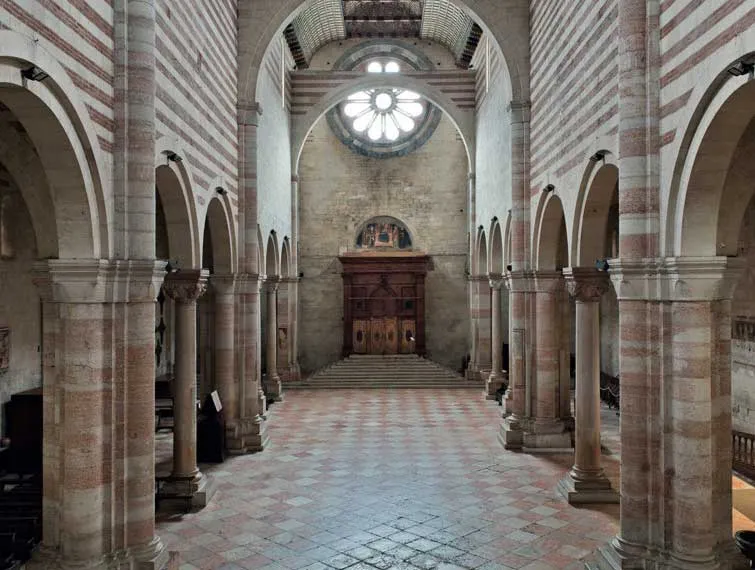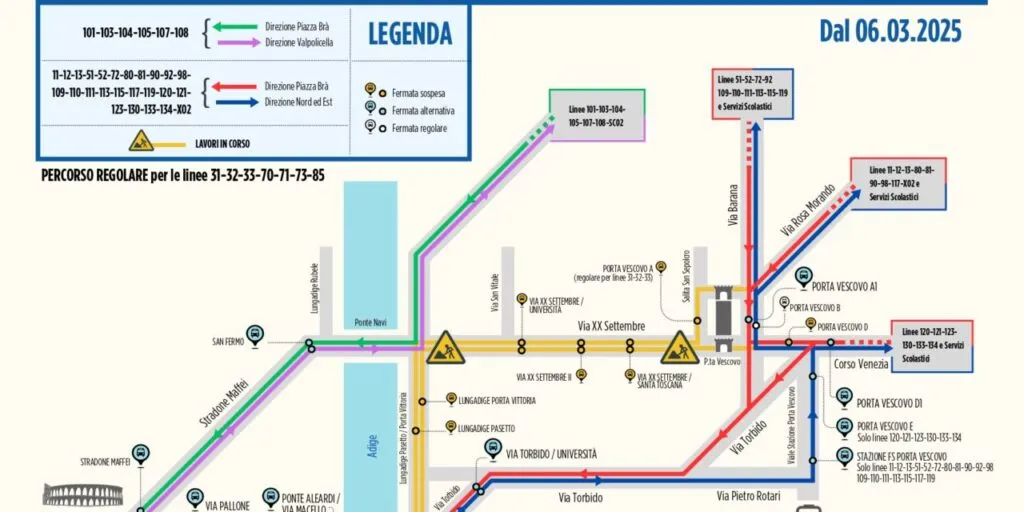(by Beppe Giuliano) There are few car races in the world whose meaning transcends the competition itself: they become traditions, icons; part of the narrative of an entire nation.The 24 Hours of Le Mans, Indianapolis, the Monaco Grand Prix and the Mille Miglia. This race that crosses Italy from Brescia to Rome and back arrives this year at its 96th edition.
When it was conceived, Italy was beginning to fall in love with cars that, although still the prerogative of a small elite, had been able to ignite the passion of Italians who began to work more and more in factories and who saw the car as a symbol of a statement still very far away.
After the Second World War, when the Mille Miglia was interrupted between 1940 and 1947, this race acquired a different meaning: it was the symbol of the desire for rebirth for an entire population; the showcase of the ability to rebuild from scratch and the skills of its factories together with a new generation of industrialists who have delivered faster and more successful cars on the road.
It was seen as a redemption after the sufferings of a lost war and the people’s will of a new start after years of dictatorship. The challenge was in its roots: Mille Miglia raced on everyday streets, without stopping, always pedal to metal, not caring about what was after the next corner.
Enzo Ferrari called “cavalieri del rischio” ( Knights of Risk) his drivers and that iconic risk of the Mille Miglia was shared not only by the drivers competing but also by the spectators who crowded the streets not caring about the dangers of the race. The Mille Miglia became so dangerous that in 1957 the authorities suspended the race after the deadly crash of spanish driver Alfonso de Portago, his american navigator Edmund Gurner and nine spectators, five of which were children.
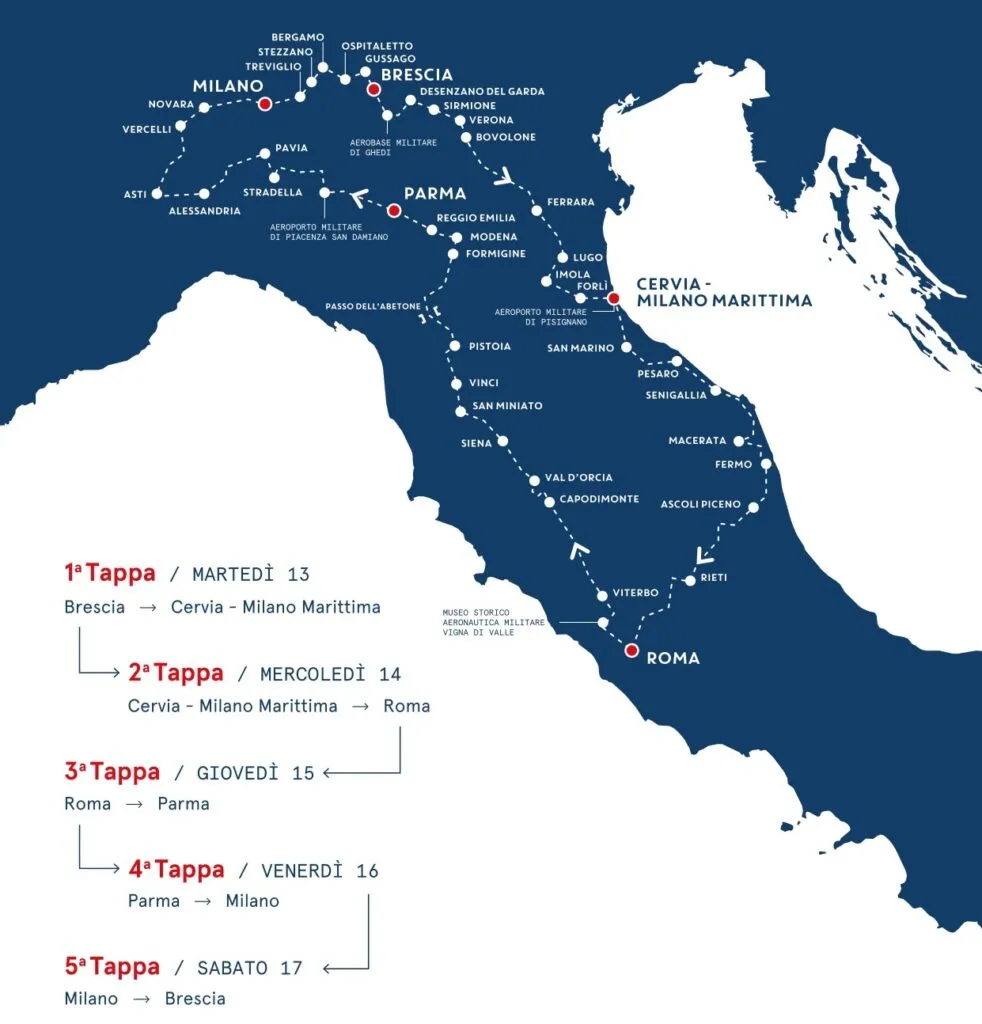
In 1977 the race returned as a regularity rally. Today drivers continue to race on public roads, a 1600-kilometer route where pure speed is not the main goal. Yet it remains a challenge: more than 400 teams take the start, but one in four does not see the checkered flag.
Nowadays the vehicles that can compete in the Mille Miglia are only the ones that paticipated between 1927 and 1961. We are talking about true art pieces, mechanical masterpieces without any new driving safety feature like ABS and power steering.
The tires are hard and thin and at just 100 kph the breaking time becomes infinite and comforts are non existent: the engine noise makes his way into the cockpit so loudly that its easier to read your navigator lips than to hear what he’s acually saying. Some teams participate to win, after all it’s still the Mille Miglia, but the majority of the participants are enthusiasts from all over the world that displace on the streets these jewels that are usually garage kept just to take part once a year in “the most beatiful race of the world” enjoying an Italy that probably no longer exist.
There are images that leave an unwashable mark on the minds of those who take part in a Mille Miglia and the first is the people, they are everywhere along 1600 kilometers, of all kind: car enthusiasts from the Alfa Romeo and Fiats 500 Club from all over Europe (and woe to not return their loud greeting); you will find students groups in uniform waving the “Tricolore” (the Italian national flag), elderly people reminiscing about the old times.
If for some reason you have to stop, you’re screwed: before you have even the slightest chance of getting back on the road you have to take hundreds of selfies, you have to tell the story of your car and accept a glass of wine (which certainly will not help you during the race).
You feel like people are not noticing you? Are they looking at a Porsche instead of your Italian red sports car? No worries: drop a gear, rev your engine and make it scream through the exhaust pipes and there you go, all of a sudden everybody is cheering for you and your car, clapping and asking for a high five.
After the people, you will never forget Italy’s landscapes and old cities. Entering Ferrara in the dark under the rain is breath taking, a jump back in time of a hundred years… Speeding on your way to Vatican City in Rome, down Via della Conciliazione is worth the pain of a stage that starts in morning in Rimini, very far away.
Driving to Piazza del Campo in Siena, among thousands of tourists, turning, using all the strength of the arms to get around the curves of the old city is tiring but knowing the essence of Italian culture – the Palio and what it represents – returns all the energy.
I participated in two Mille Miglia with Scuderia Santa Margherita owned by Marzotto family ( protagonist of the roaring years after the war with the counts Pietro– who raced also in Formula One – and Giannino, winner of the 1953 edition of the Mille Miglia with a Ferrari 340MM spider).
In 2016, i was assigned a Lancia Aurelia B24 spider, over a million dollars worth of car under my rear end, an iconic car that made history with the movie “Il Sorpasso” by Dino Risi with Vittorio Gassman and Jean-Louis Trintignant.
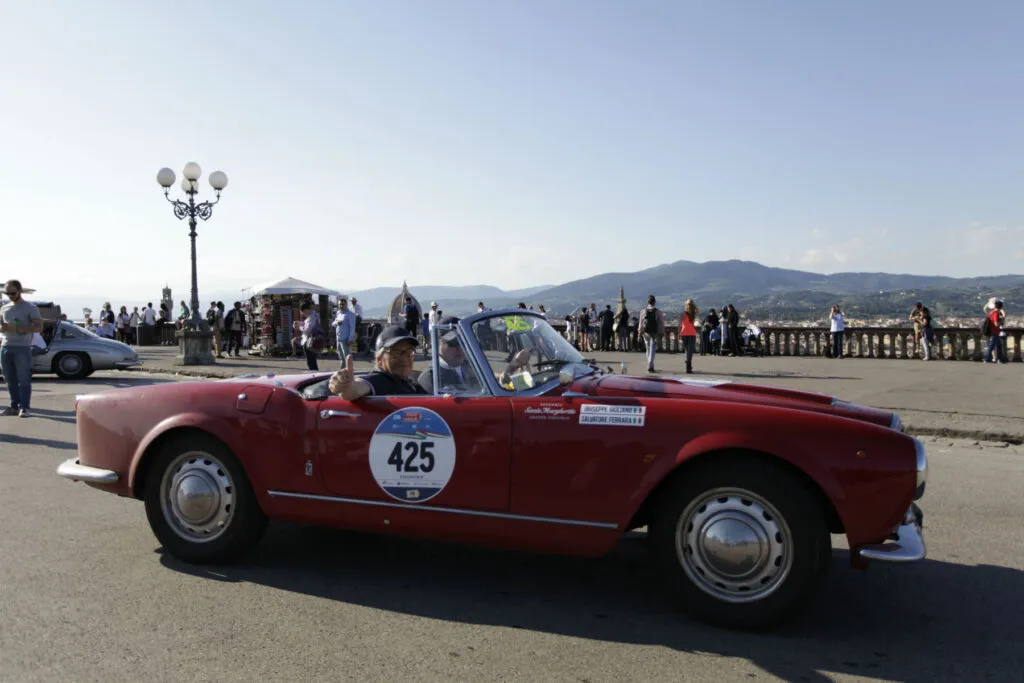
In that team there was also a “real” driver, Formula One champion Ivan Capelli. This was my Mille Miglia progression (this photo was take in Florence at the time check with co driver Salvatore Ferrara): 1st stint: 359th place/442 car in the competition; 2nd stint: 321th/439; 3rd stint: 298th/435; 4th stint: the car was retired just a few kilometers from the National Circuit of Monza. Not to bad for a gentelmen driver…
The Mille Miglia 2023 starts on Tuesday 13 June at 12.30 from Brescia, passing through Verona and Veneto in the day. It will conclude Saturday, June 17 with the final parade again in Brescia and the show is guaranteed. (translation, Rocco Fattori Giuliano. Credits photo: InCassetta, Scuderia Santa Margherita, Mille Miglia)

